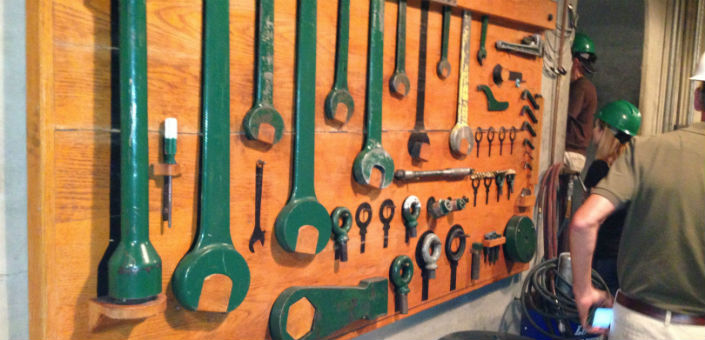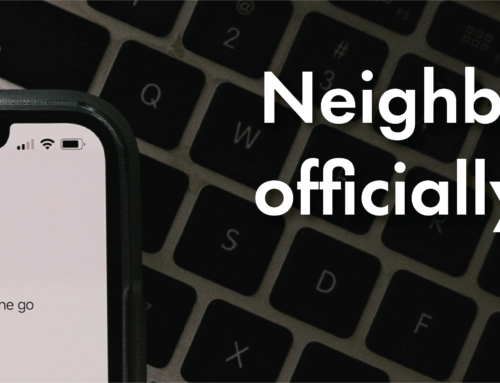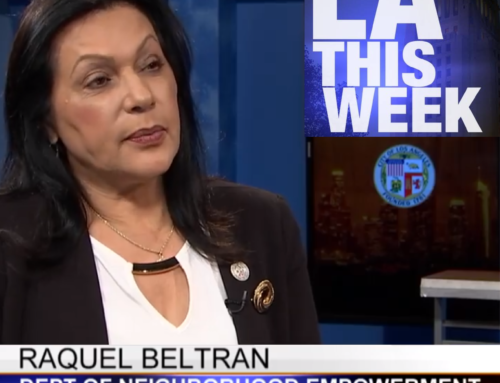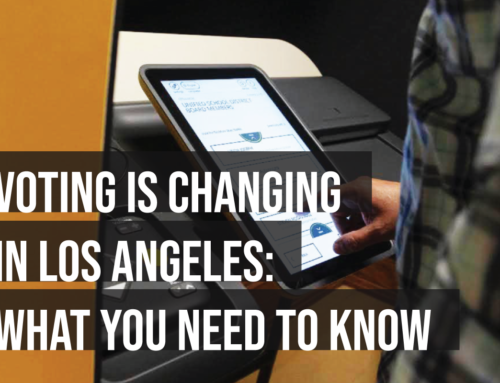Many of our city’s hopes for a better planet meet in a curious place: the Los Angeles Department of Water and Power. Whether it is a sustainable local water system in the midst of drought or reducing the city’s greenhouse gas emissions in the midst of climate change, LADWP attracts the attention of a wide variety of environmental interests. Add the need for good local jobs and the need to keep rates down in an increasingly low-income city, and you have the perfect policy storm.
A DWP Reform governance measure is winding its way to the November 2016 ballot. Other DWP Reform proposals are cooking in the City Council’s ordinance kitchen. Meanwhile, LADWP and its current Board march forward with the business of running the nation’s largest municipal utility.
At the June 21 Board meeting, Commissioner William Funderburk saw his personal goal of “equity metrics” proposed for adoption before the end of this year. These measures will help to assure that DWP programs and services are fairly distributed among the city’s neighborhoods, including those with the lowest incomes. General Manager Marcie Edwards presented the first in a series of briefings to the Board on the complexities of regional power integration. Then on June 23, a group of policy wonks from city government and the private sector (including this writer) gathered to advise DWP in its long-term power planning process.
The LADWP Power Integrated Resource Plan (IRP) is produced annually. It contains a 20-year look forward into what DWP expects from its power demands and government requirements. The plan outlines the investments that DWP will make in order to meet those needs, and the estimated cost of that program to its customers. The Power IRP is the roadmap for DWP’s power future. Every two years a new plan is created with the advice of interested stakeholders. That process is happening now. In the following year the plan will remain, but it will be updated by staff to reflect new, more accurate estimates of projected loads and costs.
The Power IRP planning material can be found on the DWP website at ladwp.com/powerirp. The plan itself is a giant book 1-1/2 inches thick. For the 2015 edition, click on “Documents” in the panel on the left.
In the middle of this planning process, the Los Angeles City Council has requested that DWP implement a research partnership “with the objective of determining what investments should be made to achieve a 100% renewable energy portfolio for the LADWP” (Council File 16-0243). The complexities of how to address this request informed much of the discussion at the June 23 Power IRP advisory meeting. One of the questions was a selection of four possible definitions of a “100% renewable energy portfolio”, with increasingly strict terms and resulting higher costs.
The biggest challenge of achieving a “100%” Renewable Portfolio Standard (RPS) is the time and seasonal variation of solar and wind power. The sun doesn’t shine at night, and there is much less sun and wind available in the winter. There is not enough geothermal power available to make up the difference. There are two large power sources that do not generate greenhouse gasses, large hydro (like Hoover Dam) and nuclear power. For whatever political reasons, these may not be counted as “renewable” energy. Batteries and other forms of power storage cannot shift power forward over seasons (that is, save summer generation for use in the winter). The result is that gas-fired power capacity is an essential part of a reliable energy system.
At the end of the day, reliability is the most important value in our power system. When you flip the switch, you expect the power to come on.
The conflict between a politically motivated City Council and the realities of a public power system are now playing out in San Diego. On December 15, 2015 that City Council adopted a Climate Action Plan which makes a commitment to 100 percent renewable energy by 2035. The only municipality that has achieved that goal to date is the tiny town of Burlington, Vermont (population 42,000). The Burlington Electric Department was fortunate enough to be able to bundle power purchase contracts with wind farms together with power from a hydroelectric dam that will serve night, winter, and windless-hour loads.
For more information on how challenging the 100 percent renewable goal is in San Diego, together with information on the complexities and limits of “Community Choice Aggregation” (CCA) in California, check out the KPBS News report at the following link:
http://www.kpbs.org/news/2016/jan/08/how-will-san-diego-reach-its-100-renewable-energy-/
In both San Diego and Burlington, Vermont, the cities are essentially large customers. They are simply choosing to buy power from others, and specifying that it be “renewable”. The Los Angeles Department of Water and Power, on the other hand, is a “balancing authority”. It is much more difficult, technically, to achieve 100 percent renewable power when you are responsible for running a complete electrical system.
LADWP is a vertically integrated power system. It owns power generation systems and transmission lines in addition to its local power distribution system. All of the western states are interconnected in a single power region. All of the systems must operate in perfect coordination at 60 cycles per second or there will be massive regional blackouts. That is why the role of LADWP as a “balancing authority” is so critical. DWP must continually balance output from increasingly variable renewable energy generation (clouds pass buy, solar power drops) with “dispatchable” power (you can turn it on and off) that is under its own control. If it fails to balance its energy with its load, there will be major effects on its western neighbors (and huge fines).
Fortunately for the city, LADWP has some great engineers. They are taking the city’s push into renewable energy seriously. The 2016 Power IRP will be the result of hundreds of moving pieces that include demonstration project tests, internal research on options, and joint studies with other power systems and with academic institutions. None of it is simple. All of it is fascinating.
For your monthly fix of DWP information and conversation, mark down the first Saturday of each month from 8:45 to 10:00 am for our DWP MOU and Advocacy committee meetings. Saturday, July 2 (odd-numbered month) will be Jack Humphreville’s DWP Advocacy Committee. Everyone is welcome. We meet at LADWP headquarters, 111 North Hope Street, Los Angeles. Free parking in the DWP lot.
Please send your questions and comments on DWP Reform to dwpmou@EmpowerLA.org. DWP Reform information will be posted regularly at https://empowerla.org/dwpmou. There is additional information at http://dwpreform.lacity.org.
Tony Wilkinson is the Chair of the Neighborhood Council – DWP MOU Oversight Committee. He will be contributing information on the DWP Reform process to the EmpowerLA newsletter each week.






